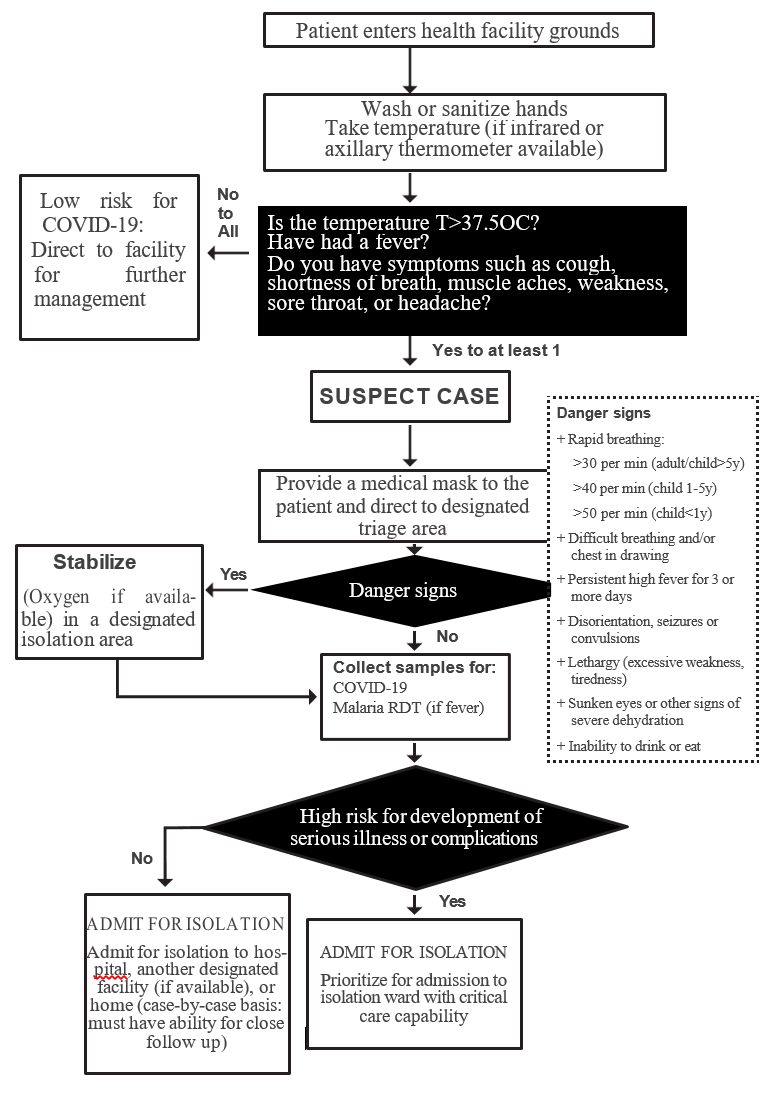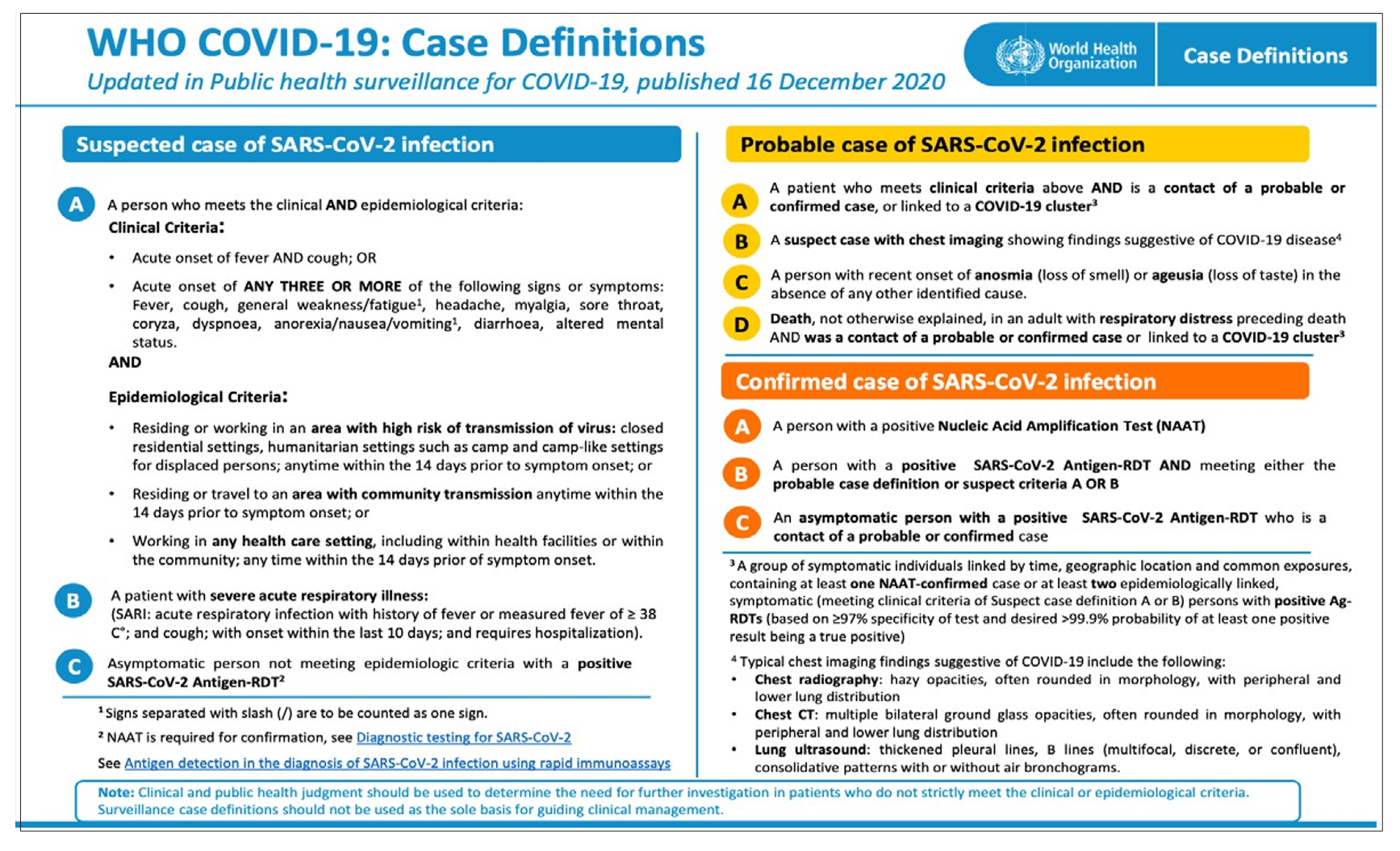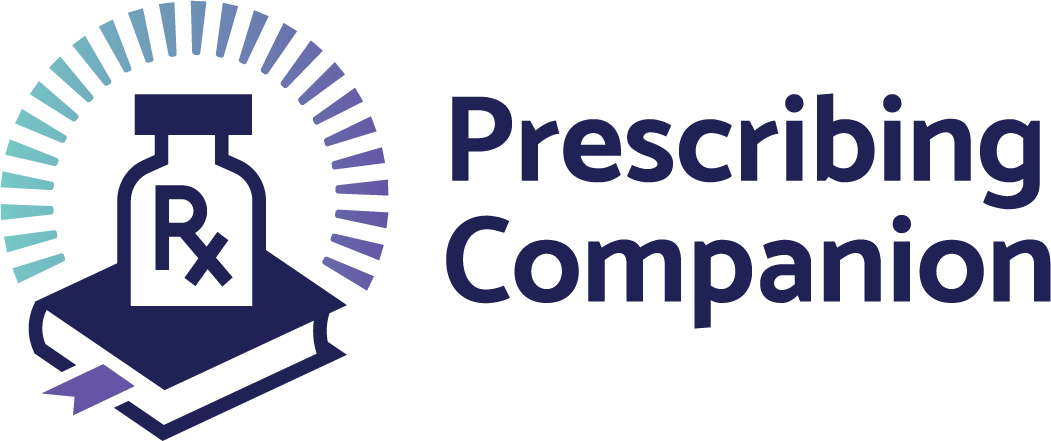COVID 19 Diseases
exp date isn't null, but text field is
Coronavirus disease (COVID-19) results from infection with the Severe Acute Respiratory Syndrome Coronavirus 2 (SARS-CoV-2). It is a novel virus in humans, knowledge of which and its pathogenesis still evolving. Additionally, the population-level immunity is uncertain. Complications of the severe infection can result in death.
Clinical features
- Early symptoms are non-specific and may include:
- fever, cough, myalgia, fatigue, shortness of breath, sore throat, headache, flu-like symptoms, diarrhea, nausea, respiratory distress, features of renal failure, pericarditis, and Disseminated Intravascular Coagulation (DIC).
- It is important to know that many individuals with COVID-19 are asymptomatic. It is therefore paramount that all health workers observe strict infection prevention and control (IPC) measures at all times.
Classification of COVID 19 Disease
|
Disease Stage |
Hallmark |
Features |
|
Mild Disease |
No Respiratory Distress |
Normal Vital Signs |
|
Moderate Disease |
Non-Severe Pneumonia |
Crackles in chest but Normal SPO2, mild respiratory distress (Resp Rate <30) |
|
Severe Disease |
Oxygen De saturation |
Severe Respiratory distress (Resp Rate >30) & SPO2 <90%, |
|
Critical |
Organ Dysfunction |
CNS: Altered Mental State CVS: Hypotension & Shock Kidney: Decreased Urine Output, Raised Creatinine Liver: Elevated liver enzymes Coagulation: Raised PT & INR, Thrombocytopenia Endocrine: Hypoglycemia |

Groups at High Risk of Developing Severe Disease or Complications
- Age > 65 year
- Obesity
- Lung diseases (e.g. asthma, TB, COPD)
- Hypertension
- Heart conditions such as history of heart attack or stroke
- Diabetes
- Cancer patients whether or not on chemotherapy
- Advanced liver disease
- Person living with HIV
- Kidney disease
- Severe Acute Malnutrition
- Sickle cell disease
- COVID 19 unvaccinated
- Pregnancy and recent pregnancy
- Hypertension
Differential diagnoses
- Malaria and other febrile illnesses.
- Common respiratory, infectious, cardiovascular, oncological, and gastrointestinal diseases
Investigations

Management
- Perform SARS-CoV-2 Rapid Diagnostic Test (RDT)
- Carry out nasopharyngeal swabs for RT-RNA test
COVID-19 screening and triage process at health facilities
- COVID-19 triage aims to flag suspected patients at first point of contact within the healthcare system in order to protect other patients and staff from potential exposure.
- Identify and rapidly address severe symptoms, rule out other conditions with features similar to COVID-19, ascertain if suspect case definition is met.
- All suspected patients should be directed to a designated area away from other patients and handled as per standard Covid protection guidelines
- Refer to the Comprehensive COVID-19 Case Management Guidelines for details.
|
TREATMENT |
LOC |
|
Safety of health workers and caregivers: maximum level of infection control procedures
|
HC2 |
|
No Hospitalization (mild to moderate diseases)
Adults and Children >40kg at increased risk of de- veloping severe COVID-19 diseases. Refer to current Covid-19 treatment guidelines.
|
HC2 |
|
If the patient requires hospitalization (Severe to Critical disease)
or JAK Inhibitor (baricitinib) For details refer to the Comprehensive COVID-19 case Management Guidelines |
RR
|
Prevention
- Vaccination (Refer to chapter 18: Immunization)
- Epidemic preparedness i.e. prompt detection and treatment
- Infection Prevention and control measures including mask wearing, social distancing, regular handwashing, avoid shaking hands etc.
